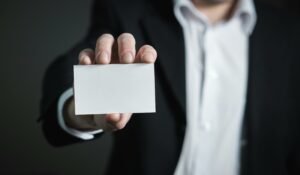A lot goes into running a successful personal training business. You need to coach your existing clients to success, continue learning and refining your practice, provide exceptional customer service, and network with others in the fitness industry.
But perhaps more importantly, you need to find effective and sustainable tactics to get more clients without neglecting your existing ones. Doing so is easier said than done because personal training marketing takes time to figure out and implement.
To that end, we’ve put together this guide to outline some of the most effective personal training marketing ideas to advertise your fitness business and be successful.
How to Advertise Yourself as a Personal Trainer
Define your target audience and know who you want to train. Then, identify your Unique Value Proposition (UVP) to set yourself apart. Build up your website and social media presence to establish yourself as an expert. Display your credibility and expertise to build trust with prospective clients. Finally, create your ads: write a compelling headline, copy, and call to action (CTA).
Define Your Brand and Unique Value Proposition
Any good marketing plan starts with a clear understanding of your business, target audience, and how you can solve a specific problem. So, before going to Facebook and purchasing some ads to promote your personal training services, go through the following steps:

Try Hevy Coach
Intuitive personal trainer software, with a world class experience for your clients.
30 day free trial, no credit card required
1. Define Your Target Audience
It can be tempting to become everyone’s personal trainer: men and women, young and old, healthy and injured, etc. After all, why box yourself in by going after a small niche when you can offer your services to a broad market, sign clients more easily, and make more money?
The problem is that trying to please (or target) everyone with your marketing message makes it difficult to stand out. Your only option is to use a generic sales copy everyone has seen a thousand times before. In other words, try to please everyone, and you will please no one, least of all yourself.
A far better approach is to define your target audience––in other words, who is your ideal personal training client? To answer the question, think about things like:
- What prospective clients do you feel you can serve best?
- Do you have unique skills or experiences that could help you coach a specific type of person better than your competition?
- Working with what type of person would make you feel more fulfilled?
- What do you want your fitness business to look like five years from now?
Picking a niche makes it easier to refine your marketing message, enjoy higher conversion rates, and save money on paid advertising in the long run.
2. Understand Your Ideal Client’s Needs
Say you’ve come up with the ideal type of client––the person you feel confident you can guide to success. You must now do some research and think about that person’s unique needs, doubts, goals, and frustrations. Research is also valuable for ensuring your ideal client exists and is looking for personal training services.

Sit down, imagine your ideal client in their daily life, and answer some questions:
- How old is that person?
- What does that person do for work? Or perhaps they are still in school?
- What challenges is the person facing?
- What limiting beliefs is the person holding?
- Where does that person hang out online?
- What short and long-term goals does that person have?
- What is stopping the person from reaching their goals?
- How can you help that person overcome each challenge? Be specific.
3. Identify Your UVP and USP
Your unique value proposition (UVP) is your service––what are you offering, and is it unique and different from what other personal trainers sell? On the other hand, your unique selling proposition (USP) describes why clients should hire you instead of someone else.
An example of a UVP for a personal trainer would be something like this:
“Holistic fitness approach: My services go beyond guidance in the gym. As a fitness professional, I understand that my clients must take good care of themselves, not just while exercising. Because of that, I offer lifestyle and nutrition guidance on top of tailored workout routines.”
Now, an example of a USP could be:
“Guaranteed results: Offering training, nutrition, and lifestyle guidance for each of my clients leads to far superior results. Instead of only focusing on one thing to drive results, we attack the problem from several angles and help people gain full control of their lives.”
Crafting your UVP and UPS will take time. You will probably have to brainstorm several angles and write a few paragraphs until you arrive at something you genuinely like. You can refine your propositions once you gain experience and insight into the fitness industry.
To help you craft your perfect propositions, consider your past experiences, expertise, certifications, specializations, or other unique things that set you apart.
Check out Hevy Coach if you’re looking to stand out from your competition. The all-in-one platform is designed for personal trainers and coaches to create and deliver training programs, track their clients, answer questions, and more.
4. Craft a Compelling Personal Brand Story
We are naturally drawn to stories because they evoke strong emotions and allow us to form deep connections with people, especially if there are shared successes and failures.
Do you know why personal trainers often share stories of how they were extremely overweight or skinny and managed to turn their lives around? Because people resonate with such stories and want to experience these successes for themselves.
Like most people, you probably have a unique story to share. Here are a few tips to keep in mind:
- Be authentic: Don’t try to be something you’re not––be yourself and let your personality shine through your story. Being authentic is being unique, so don’t be afraid to open up, share your values, and explain why you became a personal trainer.
- Share your journey: Tell everyone how you started and what sparked your interest in health and fitness. Don’t be afraid to highlight pivotal moments, successes, and failures. We all experience setbacks; sharing yours is a great way to evoke empathy and form deep connections with people.
- Explain how you felt at different points: Did you feel hopeless, frustrated, or angry? Or were you perhaps inspired, happy, and eager to embark on your fitness journey? Share how you felt at different points of your journey to help people understand your situation and what you’ve had to overcome to get to where you are now.
- Tell people what you’ve learned: Learning from the past shows maturity and intelligence. More importantly, it subtly communicates to people why you’re the personal trainer they need if they want to be successful. It’s one thing to list a few skills and another to outline your journey and share exactly how you’ve acquired unique insights and abilities.
- Keep it memorable: The first draft of your story can be as long as you want it to be. However, as you return to the text, re-read everything and remove the non-essential elements. Ask yourself: Is my story memorable and good without this part?
Depending on your first draft, the final version of your story could be 20, 30, or even 50 percent shorter.

Try Hevy Coach
Intuitive personal trainer software, with a world class experience for your clients.
30 day free trial, no credit card required
5. Tailor Your Marketing Messages
Going through the previous points is necessary because it helps you narrow your focus and craft the perfect marketing messages to convert people into clients.
Understanding your target audience, knowing what your ideal client needs, identifying your UVP and USP, and crafting your brand story are all essential for creating sales materials that resonate with your target market.
Marketing messages like “I will help you build muscle” are easy to write but don’t get you anywhere. The more time and effort you spend on your message, the more likely you are to draw people’s attention and sign your first few clients.
Build an Online Presence and Grow an Audience
1. Create Your Website
Develop a professional website and include three mandatory pages:
- About page, where you share your story and include your bio for people to learn who you are, where you come from, and why you’ve decided to be a personal trainer
- Landing page, where you include information about your services and what people can expect from working with you
- Contact page, where you clearly and specifically outline where and how people can get a hold of you
Additionally, develop a consistent visual identity with your unique logo, fonts, and colors to increase brand recognition. Use these visual elements on all website pages and social media accounts.
2. Build an Email List
Building an email list can have a profound positive impact on your business for a couple of reasons. First, converting website visitors or social media followers into email subscribers means you’re building a list of highly engaged people interested in what you have to say.
Second, you own the list and can communicate with these people whenever you choose. You’re not at the mercy of social media or Google algorithms that can hinder your reach from one day to the next.
To build an email list, sign up for a service like Aweber or ActiveCampaign. Then, create your first opt-in form, where people can input their name and email address in exchange for a freebie: a free consultation with you, a PDF file, a training plan, an email course, or something else.
Embed the opt-in form on your website to convert a percentage of the visitors. For example, you can place the form at the bottom of blog articles and on your sidebar.
Once people sign up for your email list and it starts growing, keep your subscribers engaged by regularly sharing helpful information and tips. Occasionally mention your services and promote them to people in your area.
Converting email subscribers to clients can be challenging because most won’t live in your area. However, there is still value because you can transition to online personal training down the road and work with people from all over the world.
4. Use Social Media to Expand Your Reach
Instagram, TikTok, and Youtube can be fantastic social media platforms for expanding your reach, growing your audience, and converting some followers into email subscribers.
Create a profile on these platforms and share helpful social media posts in the form of short (or long) videos, stories, images, infographics, and more. Sharing information that helps your followers achieve an outcome or gain clarity on a topic builds your authority, making people more interested in working with you.

A distinct benefit of social media is that there is an element of virality. With quality content (and a little bit of luck), you can reach thousands or millions of people and see exponential growth.
Just look at Noel Deyzel–a fitness influencer who perfectly uses Youtube shorts. He saw explosive growth in video views and subscribers between May and September of 2021, and his channel has continued to grow since then.
Noel relies on short, humorous, inspirational, and educational videos to provide value, which, in turn, has made him one of the most prominent names in fitness today.
Get 16 ideas on how to create fitness content.
Establish Credibility and Expertise
1. Get Your Certification
Earning a personal training certification is one of the best investments you can make in yourself and set yourself up for success. The right certification:
- Displays your expertise and knowledge
- Increases your chances of landing a good job at a solid gym
- Allows you to work under experienced trainers and learn from them
- Gives you access to a steady stream of prospective clients
- Increases your earnings potential
- Lays down a foundation for you to build upon and specialize in if you choose
- Increases client trust, making it easier to expand your roster
Good certification programs include ACE, ISSA, NASM, ACSM, NSCA, and NCSF. You can learn about these programs and how much each costs here.
Related article: How Long Does it Take to Become a Personal Trainer?
2. Collect Testimonials
Testimonials from satisfied clients are a powerful form of personal training advertising. A few good words from a client will instantly boost your credibility and make others likelier to hire you as their coach.
One option is to hand out a form for clients to fill out if they want. It can include questions like:
- What did you like about working with me?
- Did I help you reach your goals?
- In what other ways did I help you lead a healthier lifestyle?
You can also add a few lines for a brief testimonial, where your clients describe the whole experience to give prospective clients an idea of what it would be like to work with you.
Clients can also film short videos where they talk to the camera and explain what it’s like to work with you, what goals they’ve achieved, and more.
Display testimonials on your website and social media profiles to boost your credibility and develop a reputation in the industry.

Try Hevy Coach
Intuitive personal trainer software, with a world class experience for your clients.
30 day free trial, no credit card required
3. Highlight Your Successes as a Personal Trainer
Aside from asking clients for testimonials, you can highlight your successes as a personal trainer in several ways:
- Case studies: Write detailed case studies where you share your client’s story. Include information on where they started, what challenges they faced, what training plan you designed for them, and how you helped them in other ways. Include all the relevant details to give prospective clients a better idea of what they can get from working with you. Here is an example of an interesting case study.
- Before-and-after photos: Displaying photos of your clients before they started working with you and comparing them to their results months later is a great way to visually showcase how you can help people. Progress photos are especially powerful in the weight loss niche.
- Interviews with clients: Jump on Zoom or Skype video calls with clients and record your conversations. Ask them about the coaching process, their experiences, struggles, and successes. Your clients can also share their stories to provide context and explain how your guidance has helped them.
Upload these promotional materials on your Youtube channel, social media, and website. For example, here is how Mike Matthews of LegionAthletics publishes case studies:

He starts with an attention-grabbing headline and then includes the questions he asks with the client’s responses:

In any case, respect your personal training clients and their privacy. Always ask for their consent before publishing information online.
4. Share Engaging and Informative Content
Producing helpful and engaging content is highly beneficial for your personal training business for two reasons.
First, it helps you build an audience and grow your influence online. For example, creating content for social media platforms can help you establish yourself as an authority and gain a respectable following, which could present new opportunities.
You can leverage your influence online to land a good job at a local gym, collaborate with many personal trainers, and even create online products to supplement your income. Some trainers transition to online coaching because of the greater flexibility.
The same goes for building a successful Youtube channel or growing an email list through a blog. Podcasts, video shorts, and social media posts can also be fantastic ways to share helpful content for free.
Second, sharing informative content establishes you as an expert and helps you land more personal training clients. Providing value online increases visibility and builds trust, encouraging people to seek out your services.
One option to translate your online influence to local business success is to use targeted local marketing on your social media channels. Creating ads for people in your area would increase exposure and help you reach potential clients seeking personal training services.
Someone might be casually scrolling through social media and suddenly realize that a well-respected trainer with thousands of followers offers in-person coaching a few blocks away.
Targeted marketing can help you land more clients and expand your business through word-of-mouth if you provide excellent service.
Related articles: How to Start a Personal Training Business in 7 Steps
Invest in Paid Advertising: 4 Crucial Steps
1. Research and Evaluate Advertising Platforms
Evaluating the different advertising platforms can be tricky, especially if you don’t have experience in the area. A degree of trial and error is necessary to get started and see some initial success. Here are a few tips for successful paid advertising:
- Consider where your ideal client hangs out online: research user demographics of platforms that offer paid ads and consider factors like age, location, and interests to boost your chances of reaching the right people. Instagram ads are generally a good option because people of all ages use the platform, and many are interested in fitness.
- Learn about performance metrics and analytics: the platforms you advertise on should offer in-depth analysis and the available data: impressions, clicks, conversions, etc. Access to more data makes it easier to calculate your return on investment (ROI) to determine if your ads help you grow your personal training business.
- See what other personal trainers have said: look for social media posts, Youtube videos, and articles where fitness professionals share their marketing strategies. Assess their outcomes and determine if your goals align with theirs.
- Ask for recommendations: do you know any personal trainers, gym owners, or marketing experts? Why not reach out and ask for some suggestions? Explain what you’re trying to do and consider their advice. Even if you don’t know anyone, you can always visit online forums or join Facebook groups and ask fellow trainers for help.
Advertising platforms develop and change, so it’s crucial to stay up-to-date on the latest changes and never write off an advertising platform for good.
2. Set a Budget
Setting a monthly budget for advertising your fitness business is necessary for:
- Planning out your finances months in advance
- Allocating your money more effectively
- Controlling your costs so as not to end up wasting money
- Tracking ROI more efficiently
- Becoming more resourceful

How much you decide to allocate to your personal training marketing strategy will depend on several things––most importantly, how much can you afford to spend? Your budget will likely be smaller initially, and you will have to re-invest a significant percentage of your revenue into your marketing efforts to establish yourself.
Additionally, consider things like:
- Your cost-per-acquisition (CPA). You can’t calculate your CPA immediately, but the cost will become more apparent within a few weeks. For example, if you spend $500 on marketing strategies in a month and acquire three new clients, your CPA would be $166.66 ($500 ÷ 3).
- Seasonal or periodic demand. Personal training services are in-demand year-round, but certain periods, such as the start of each year, see a surge of people returning to the gym to get in shape. Ride that wave and manage your clients to retain a larger percentage.
- Your choice of advertising platforms. Each platform has unique costs, which you must know when determining your advertising budget. Research the potential costs based on your campaign, placement, keyword competitiveness, and the estimated cost per click (CPC).
3. Create Your First Ad
Now that you’ve set your sight on an advertising platform and have set a budget, it’s time to sit down and create your first ad. It feels exciting and scary, doesn’t it? Don’t worry––that’s normal.
Here are the essential things to consider:
- Your headline––the first or second thing people will see. The headline must grab the person’s attention and get them to read the copy. It should highlight your unique value proposition and be short, clear, and specific.
- The copy––what gets people to consider your services. All the previous steps you’ve done have led you here. Crafting a good copy comes down to understanding your target market, their primary struggles, and how you can help them overcome all the challenges.
Address potential objections (e.g., “But what if I don’t have the time?”), create a sense of urgency (e.g., limited-time discount, roster spots filling up, etc.), be clear, expand upon your unique value proposition (UVP), and include some social proof––for example, a client testimonial. - Visuals––videos, photos, and illustrations grab the person’s attention. Use an appealing image or video that evokes an emotional reaction. Don’t be afraid to take inspiration from your competitors but add a unique touch.
If you decide to record a video for your ad, follow some of the steps we shared on crafting your brand story. Be authentic, briefly explain who you are, highlight some of your successes as a trainer, add a testimonial, and conclude with a strong call to action. - The call to action (CTA)––what gets people to take action. Clearly state what the person seeing your ad should do. Would you like them to sign up for a free consultation? Or perhaps you want to get them to your email list with a freebie? For example, add a button with the text “Click here for a free consultation” or “DM me to book your first session today.”
- Targeting options––making sure your ad reaches the right people. Leverage demographic targeting (age, gender, education status, etc.), geographic targeting (aiming at people close to where you operate), and interest targeting (aimed at people who have shown previous interest in fitness or personal training).
Using lookalike audiences is also an option. Facebook can find people similar to your existing audience (people who have visited your website, interacted with your page, etc.).
4. Analyze and Refine
Creating your first ad and attracting more clients than you can handle would be amazing. Sadly, things rarely go that way unless you have years of experience crafting and promoting ads. To be successful, you will likely have to refine your approach as you go along.
You must regularly analyze key performance metrics of your ad to see if you’re on the right track. The most important metrics are click-through rates (CTRs) and conversion rates.
A click-through rate tracks what percentage of people click to see more information about your ad when it appears in their feed. CTR is calculated by dividing the number of clicks an ad gets by the number of times it is shown (impressions). That number is multiplied by 100 to get a percentage.
For example, if 1000 people see your ad and 50 clicks to learn more, the conversion rate would be 5 percent––(50 ÷ 1,000) * 100 = 5%.
Conversion rate takes things a step further. It looks at the number of times people take the desired action: booking a consultation, signing up to your email list, etc. To calculate your conversion rate, you must divide the number of conversions by the number of ad clicks. You then multiply the value by 100 to get a percentage.
Using the same example from above, if 50 people click through and 5 take the desired action, your conversion rate would be 10 percent––(5 ÷ 50) * 100 = 10%.
Track these metrics across ads on different platforms to compare how they perform. You can take things further by A/B (split) testing your ads to see if small changes improve conversion rate.
To run an A/B test, create your ad and make two copies. Then, make one change to the second ad and set them live for the test. The change could be anything: the headline, copy, call-to-action, or even the color scheme.
Changing one variable at a time is best to better understand what things improve or worsen your conversion rate. Write down your findings and continually improve your ads. You should get at least 1,000 ad impressions during a split test before concluding.
Finally, calculate your return on investment (ROI) to determine if your ads are profitable. To do that, calculate the following:
- The cost of running your ads and split tests
- The revenue from the conversions
- The profit
- The ROI
For example, if you spend $1,000 on your ads (cost) and make $3,500 (revenue), your profit would be $2,500, and your ROI would be 250%––(2,500 ÷ 1,000) * 100 = 250%.

Try Hevy Coach
Intuitive personal trainer software, with a world class experience for your clients.
30 day free trial, no credit card required
Related article: 5 Fitness Marketing Strategies to Grow Your Business
Final Words
Advertising is vital to growing your own personal training business, especially when you’re first starting. Learning how to create good ads and spending money while testing and refining your marketing material can be daunting, but the process gets easier as you gain experience.
As you saw above, breaking things down into individual steps makes it less overwhelming to get started. You must first decide what platform to use and set a budget.
From there, create your first ad by following best practices, analyze the results, and improve your ad with intelligent split testing. It will likely take some time until you get your message right, so don’t be discouraged if you spend some money without getting anything in return.
Running a successful ad campaign will drive ongoing business and help you grow into a respectable personal trainer. Once you get the ball rolling, you can leverage client testimonials and your reputation to continue signing new clients.
Of course, signing clients doesn’t mean you’re done. You must provide superior service and help people reach their goals if you hope to thrive. To that end, we strongly encourage you to check out Hevy Coach––an all-in-one platform for personal trainers. Write training plans, track your client’s progress and adherence, answer questions, and more, all from a single dashboard.
Related article: 6 Steps to Starting a Personal Training Business from Home
FAQs
1. How to get new clients as a personal trainer?
Start by getting your certification and defining your target audience. Based on that, define your unique value proposition (UVP) and unique selling proposition (USP) to set yourself apart from other trainers.
From there, build your presence online and leverage Instagram, Facebook, Google, and other platforms to create engaging ads and target the people most likely to engage with you.
2. How many clients should a personal trainer get?
The ideal number of clients for you will depend on factors like whether you work part-time or full-time, your income goals, and your experience.
A full-time personal trainer should aim to have at least 15 clients on their roster. However, you can start with fewer and gradually expand your practice to determine your ideal number.
3. How to retain most of the clients I sign?
It all starts with the quality of your service. Tailor training programs based on your client’s goals and preferences, track their progress and provide ongoing support and motivation. Ask your clients for feedback, and don’t be afraid to adapt your approach based on their needs.




